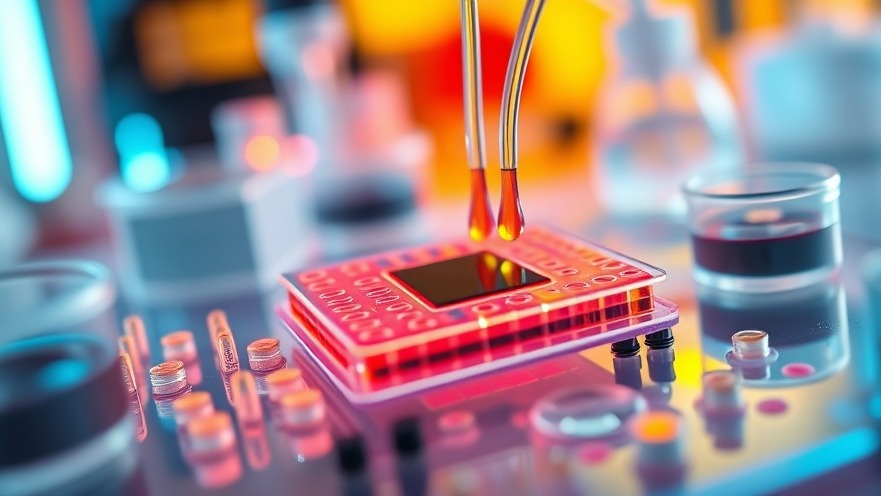
Revolutionizing Cancer Treatment with a Cutting-Edge Technology
The fight against leukemia has reached a significant milestone with the development of a groundbreaking leukemia-on-a-chip by a research team from NYU Tandon School of Engineering. This innovative device is not just a technological marvel but represents a shift towards more personalized cancer treatment approaches. Unlike traditional testing methods, this chip cleverly mimics the microenvironment of human bone marrow, crucial for understanding leukemia's behavior and optimizing therapy interactions.
High Stakes in Cancer Research
With CAR T-cell therapy showing promise but also presenting challenges such as high relapse rates and serious side effects, the pressure is on researchers to enhance treatment methods. The development of this chip allows oncologists and researchers to closely observe how new immunotherapies interact with both leukemia and immune cells. The controlled conditions of the chip enable a real-time study, providing insights that could lead to effective and tailored treatment plans for patients.
The Shift from Animal Testing to Human Simulations
The FDA's recent move to phase out many animal testing requirements opens the door to innovative alternatives like the leukemia-on-a-chip. By allowing researchers to monitor interactions in more human-like environments, this shift could lead to faster development of immunotherapies that are both effective and safe. Such advancements underscore the importance of technology in healthcare, bridging the gap between scientific research and patient treatment.
Implementation of the Leukemia-on-a-Chip: A Closer Look
The chip is designed to replicate three key areas: blood vessels, the surrounding marrow cavity, and the outer bone lining. When populated with a patient's own marrow cells, it self-organizes, creating a biologically relevant environment. This capability means healthcare practitioners can visualize cellular interactions and responses to treatments in ways that were previously unattainable.
Future Implications and Insights for Health Practitioners
The advent of this leukemia-on-a-chip technology represents a pivotal moment for oncologists and health practitioners who are keen to offer cutting-edge care. The insights gained from this research not only have the potential to enhance treatment protocols but also influence clinical decision-making. By understanding how different therapies perform in a realistic environment, practitioners can make more informed choices about which treatments may work best for their patients.
Potential Misconceptions Surrounding Technology in Healthcare
Despite the excitement around the leukemia-on-a-chip, there are lingering misconceptions about the role of technology in patient care. Some health practitioners may fear that such advancements signal a push away from patient-centered care. However, the goal of these technologies is to complement existing methods and ultimately improve patient outcomes.
Challenges and Risks of New Technologies
As with any emerging technology, there are risks and challenges. The transition from theoretical applications to practical use in clinical settings requires careful consideration, including regulatory approvals and validation of results. Ongoing collaboration among researchers, regulatory bodies, and health practitioners will be essential to effectively integrate these innovations into routine practice.
Conclusion: A Call to Embrace Change
For health practitioners eager to stay ahead in the fast-evolving landscape of immunotherapy, understanding and integrating technologies like the leukemia-on-a-chip is crucial. As the healthcare field shifts towards more personalized approaches, embracing these changes will empower practitioners to enhance the quality of care they provide. By keeping an eye on these advancements, you can position yourself as a leader in patient care. Let's commit to staying informed and ready to implement innovative solutions that benefit our patients today.
 Add Row
Add Row  Add
Add 






Write A Comment